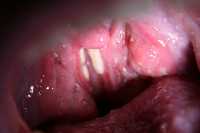Author Interviews, Dermatology, Microbiome, Pediatrics, UCSD / 30.04.2019
Microbiome in Early Adolescent Acne Changes Over Time
MedicalResearch.com Interview with:
Dr. Jusleen Ahluwalia MD
Second-year Dermatology resident
University of California, San Diego
MedicalResearch.com: What is the background for this study? What are the main findings?
Response: Preadolescence is an interesting stage during which changes in microbial diversity can coincide with the development of acne. This study is the largest assessment of preadolescent acne microbiome in the literature to date.
In this study, we found that early acne in preadolescent females is characterized by an abundance of Streptococcus mitis, while later stages are characterized by a predominance of Cutibacterium acnes (formerly known as Propionibacterium acnes).
(more…)






























